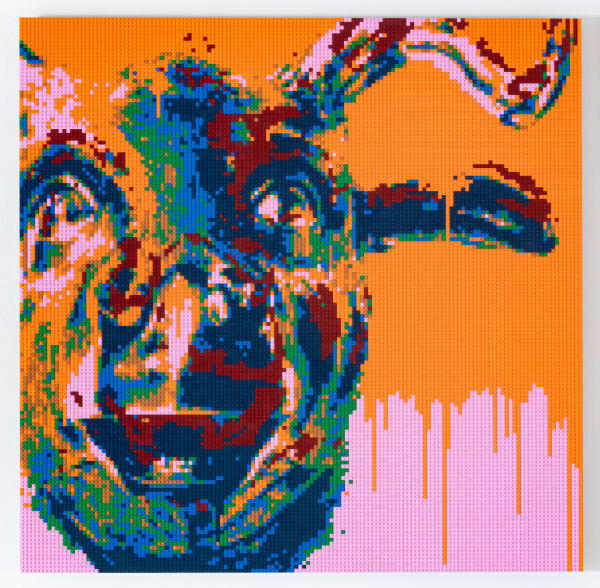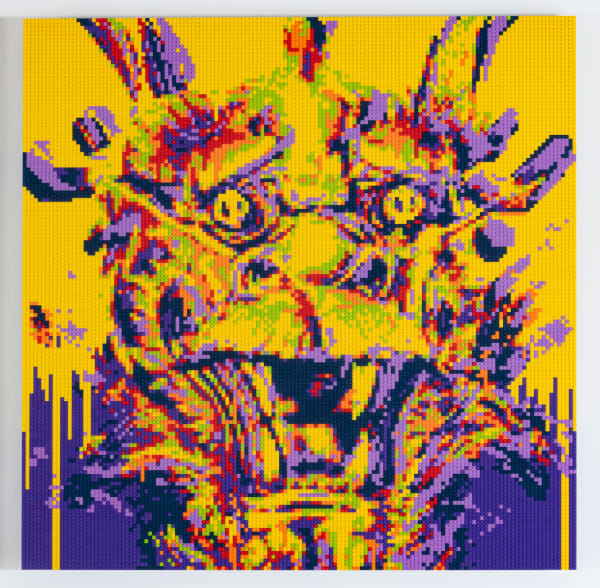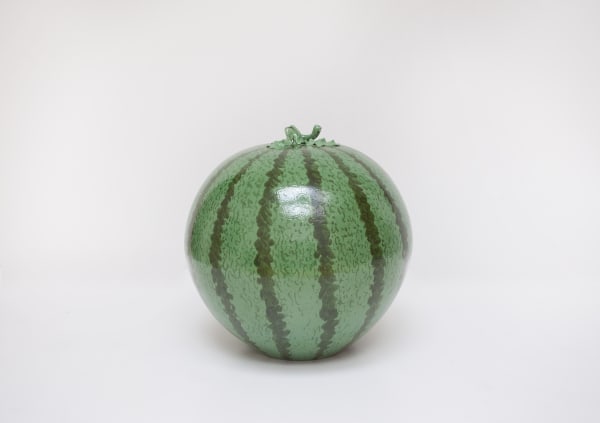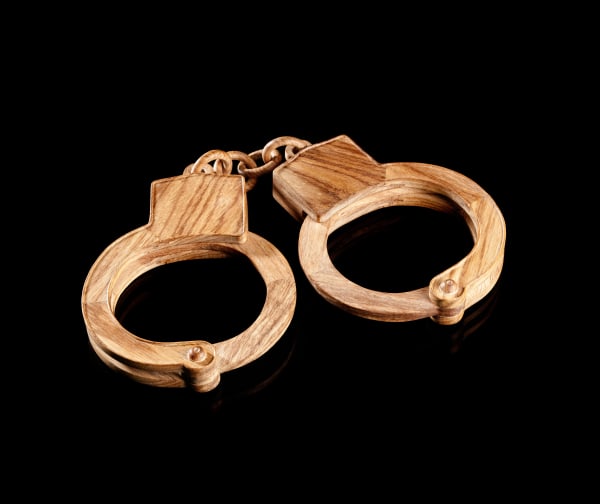-
Ai Weiwei:
Everyday MonumentsJune 4 - August 27, 2022
Ai Weiwei is celebrated for his enduring and iconic artworks that address our shared urgencies. His sculptures and installations often reveal surprising sociopolitical dimensions, shedding light on people, places, and events that might otherwise be forgotten. Such generosity is the guiding principle of Ai Weiwei: Everyday Monuments, his solo exhibition now on view at Haines Gallery.
Designed specifically for Haines' new Fort Mason gallery, Everyday Monuments comprises 18 works in materials such as LEGO, marble, and wood, each a synthesis of complex historical, cultural, and political references. The exhibition is Ai's first solo show in the Bay Area since 2016. -

-
Previously recreated by Ai in bronze, for Everyday Monuments the Zodiac heads return in LEGO bricks. In Ai’s hands, these humble toys—loved by both children and adults—are elevated in the service of a greater artistic project with layered implications. Presented here in a more contemporary iteration, the Zodiac heads remain a potent trigger for conversations about nationalist sentiment, provenance, authenticity, and cultural exchange.
-
"My work is always dealing with real or fake, authenticity, what the value is, and how the value relates to current political and social understandings and misunderstandings."
-
With their rich, contrasting colors and square shape, these works evoke Warhol’s celebrity portraits, while simultaneously referring to Ai’s first use of LEGO bricks for Trace, the enormous installation depicting political prisoners that was integral to the FOR-SITE Foundation’s 2014 exhibition @Large: Ai Weiwei on Alcatraz.
-
-
While the LEGO Zodiac works reproduce historic monuments with everyday materials, additional works in the exhibition cast everyday objects in marble, a stone associated with permanence and public memory. Four such marble sculptures on view in the exhibition exemplify the fusion of art and activism that characterizes Ai’s best works.
-

-
"You could call the installation a memorial, but it's really an indictment, the moral and aesthetic contours of which are made clear by the glaring contrast between the exquisite craftsmanship of the sculptural elements and the slipshod construction of the schools that collapsed: evidence, according to Ai, of the corruption at the heart of the regime he so vehemently opposes."
- David M. Roth, Squarecylinder -
Persecuted for his ongoing efforts to shed light on such corruption and human rights abuses, Ai was brutally beaten by police and ultimately disappeared — taken into extrajudicial custody by the Chinese authorities for 81 days, leaving the world and his loved ones to wonder about his whereabouts and safety. Following massive public outcry for Ai’s release, in the summer of 2011 the artist found himself free from imprisonment, but stripped of his passport and the subject of constant surveillance. The Lantern (2014) is a testament to Ai’s mocking response to the video cameras that once surrounded his Beijing studio, which he defiantly festooned with red paper lanterns, traditionally associated with festivals. The exquisitely carved form appears to blow in the wind despite its marble girth, as if free from the oppression of gravity.
Nearby, the Ceiling Lamp with Stars (2014) represents a light fixture common in Communist China during the 1950s and 60s. Adorned with five-pointed stars, the marble sculpture is a symbol of the Communist Party, and speaks to an era of Soviet-inspired modernity—a bygone utopia whose legacy is still strongly felt today.
Throughout the exhibition, a surprising play of materials and forms, the monumental and the mundane, invites audiences to question authority and the construction of our shared histories. Talking about the role of the individual in relation to those in power, Ai explains: “I call on people to be ‘obsessed citizens,’ forever questioning and asking for accountability. That’s the only chance we have today of a healthy and happy life.”
-
Additionally Available
-
-
 Ai Weiwei, Self-Portrait in LEGO bricks
Ai Weiwei, Self-Portrait in LEGO bricks -
Installation views of Ai Weiwei: Everyday Monuments at Haines Gallery, San Francisco, CA; photo: Robert Divers HerrickInstallation view of Ai Weiwei, Trace, 2014 in @Large: Ai Weiwei on Alcatraz; photo: Robert Divers HerrickLantern and surveillance camera; photo: David Gray / Reuters, via NBC News














